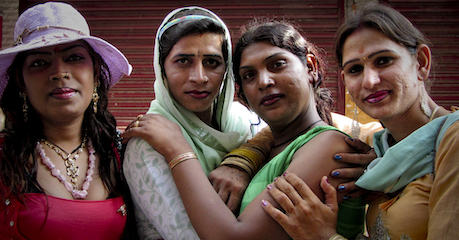
Third Gender. Culturally specific gender identities existing outside the traditional Western male-female binary. These identities, found in Indigenous and global communities, encompass social, spiritual, and occupational roles distinct from cisgender norms.
Third Gender Cultural Traditions: Muxes, Two-Spirit, and Global Perspectives
Rooted in pre-colonial traditions, third gender categories like Mexico’s Muxes and North America’s Two-Spirit people reflect sophisticated understandings of gender diversity long before Western LGBTQ+ movements emerged. These identities are not merely historical footnotes but living traditions demonstrating resilience against colonialism and ongoing contributions to cultural heritage.
Muxes: Mexico’s Zapotec Third Gender
Muxes (pronounced MOO-shays) are an Indigenous third gender within Zapotec culture in Oaxaca, Mexico. Assigned male at birth, they embody a blend of masculine and feminine traits, occupying unique social and familial roles.
Key Aspects:
- Origins and Acceptance:
- Legend attributes their origin to San Vicente Ferrer, patron saint of Juchitán, whose “mixed seed bag” spilled in Oaxaca.
- Historically revered as caregivers for aging parents, symbolizing familial devotion.
- Sub-Identities and Roles:
- Celebrated for artistic talents and contributions to Oaxacan economy and traditions.
- Celebrated for artistic talents and contributions to Oaxacan economy and traditions.
- La Vela Festival:
- Annual Vela de las Intrépidas (Vigil of the Intrepid) draws 10,000+ attendees. Features a Mass, parade, and crowning of a queen (mayordoma), costing up to $7,400.
- Annual Vela de las Intrépidas (Vigil of the Intrepid) draws 10,000+ attendees. Features a Mass, parade, and crowning of a queen (mayordoma), costing up to $7,400.
- Challenges:
- Face violence amid Mexico’s high LGBTQ+ murder rates (450+ killings 2018–2022). Activist Óscar Cazorla was tortured and murdered in 2019.
Media Recognition: Estrella Vázquez, a muxe weaver, appeared on Vogue Mexico’s 2019 cover—marking global acknowledgment.
Two-Spirit: Indigenous North American Identities
Two-Spirit is a pan-Indigenous term (coined 1990) for people embodying masculine and feminine spirits. Pre-colonial tribes recognized over 150 distinct third-gender roles.
Historical and Contemporary Context:
- Pre-Colonial Roles: Included spiritual leaders, healers, and warriors. We’wha (Zuni lhamana) met President Cleveland in 1886 as a cultural ambassador. Osh-Tisch (Crow baté) earned renown as a warrior and artisan.
- Colonial Erasure: European missionaries suppressed these identities, imposing binary gender norms.
- Revitalization: Modern Two-Spirit people lead cultural resurgence, blending tradition with LGBTQ+ advocacy.
Global Third Gender Traditions
- Hijra (South Asia):
- Legally recognized as a third gender in India (2014). Historically performed blessings at weddings.
- Legally recognized as a third gender in India (2014). Historically performed blessings at weddings.
- Māhū (Hawai’i):
- Embody dual kāne (male) and wahine (female) spirits. Served as healers and genealogists.
- Embody dual kāne (male) and wahine (female) spirits. Served as healers and genealogists.
- Bissu (Indonesia):
- Androgynous shamans among the Bugis people, representing one of five genders in their society.
Significance for Gender Discourse
- Beyond Western Binaries: Third genders challenge colonial gender constructs, emphasizing fluidity and cultural specificity. Muxes resist labels like “transgender” or “gay,” viewing their identity as a unique social and cultural embodiment
. - Modern Relevance: Diaspora communities (e.g., Bay Area Muxes) adapt traditions, hosting events like San Francisco’s Vela Muxe.
- Ongoing Struggles: Despite acceptance in home communities, third-gender individuals face discrimination in healthcare, legal systems, and violence.